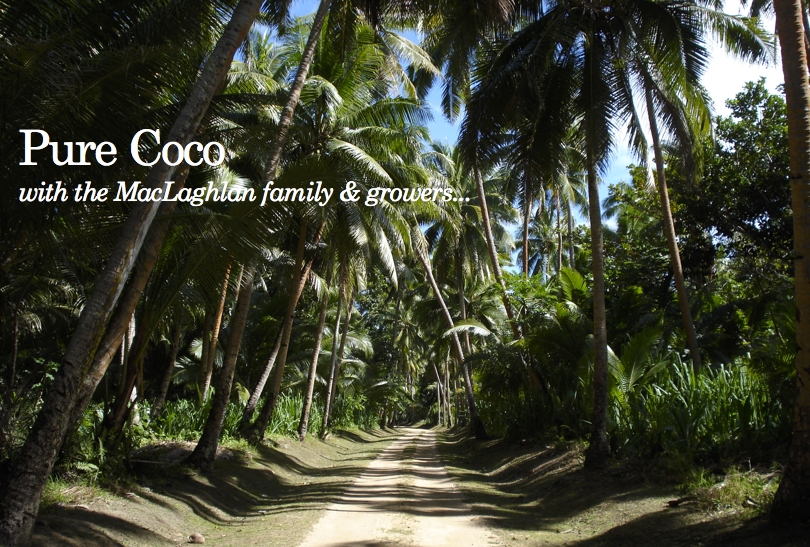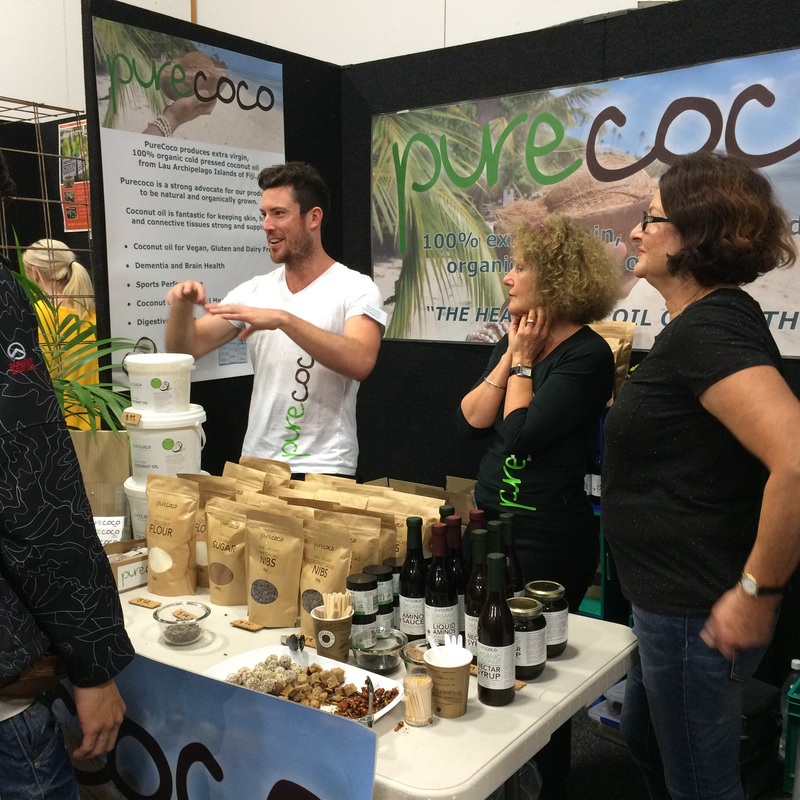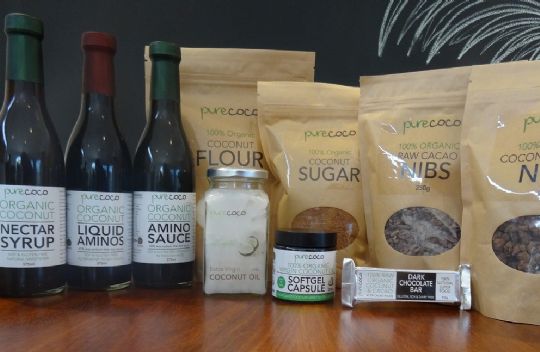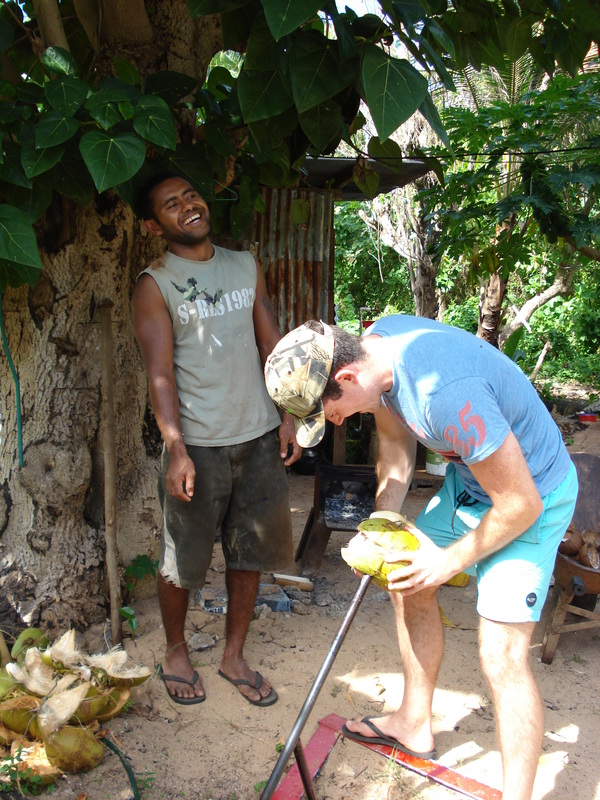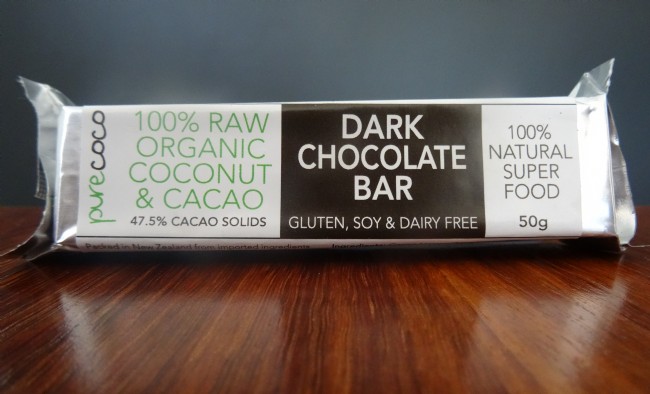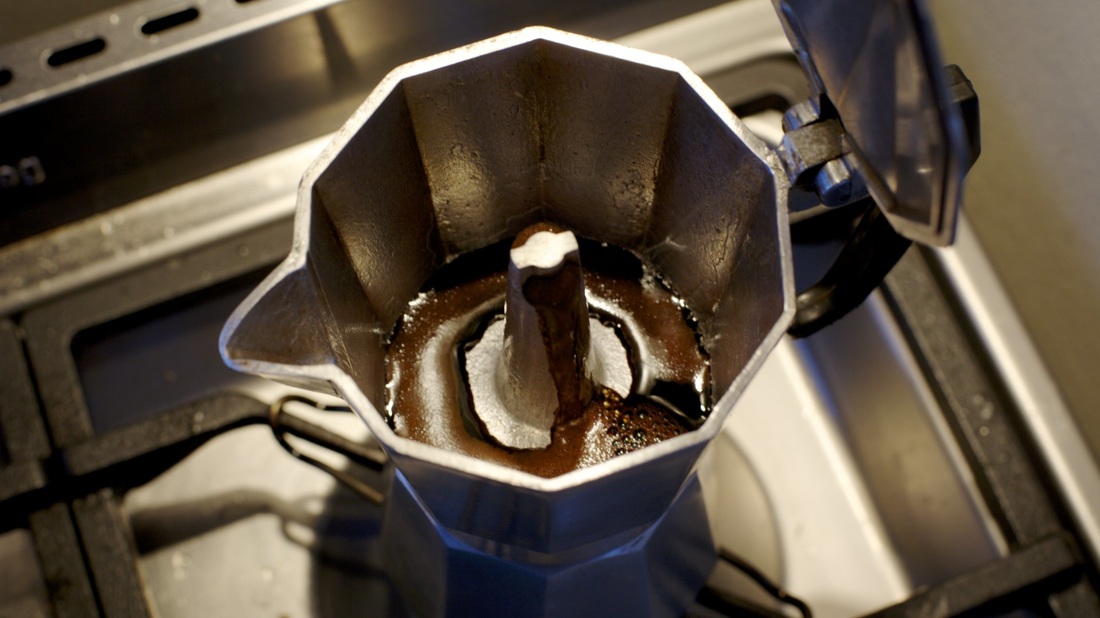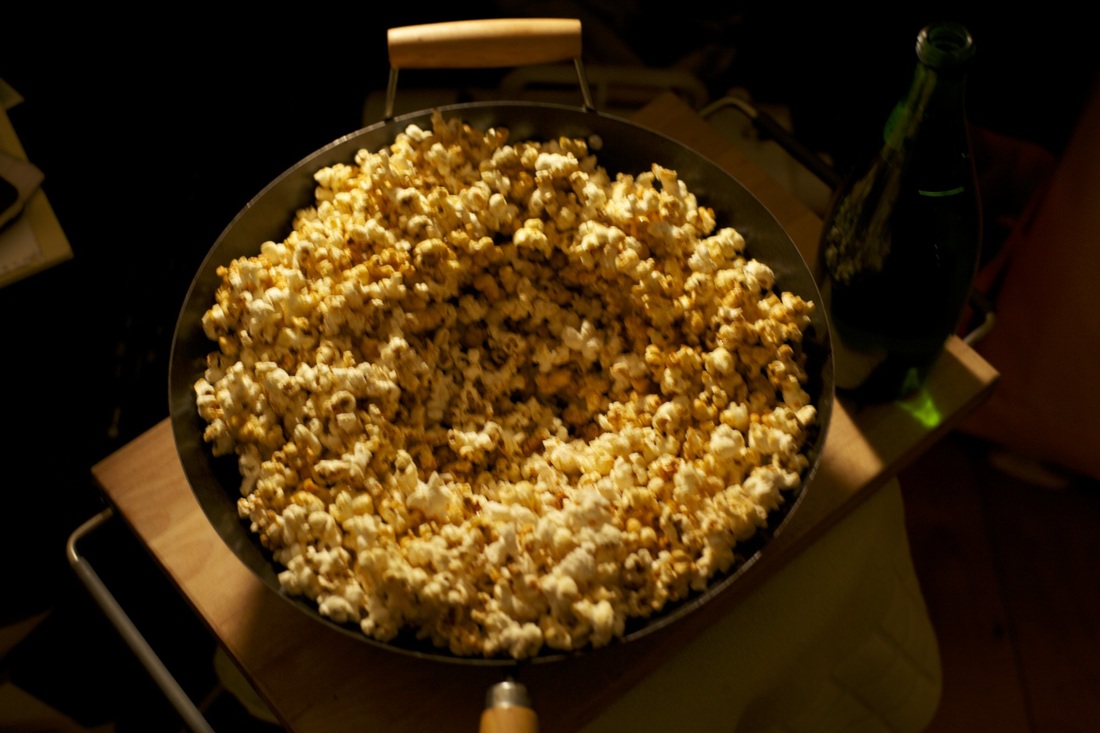For many of our boutique suppliers, serendipity seems to play a key role in the development of their companies and products. It’s fascinating to observe how seemingly random life events may eventually pull together to form, say, an amazing coconut sugar, oil or raw cacao bar. As a customer walking through the isles of Raeward Fresh in Queenstown and choosing a jar of Pure Coco’s extra virgin coconut oil from the shelf, you’d ordinarily have no idea that entire family histories, the restoration of village communities and truckloads of Kiwi ingenuity all came together to create what you’re holding in your hand. However, if you use a bit of Pure Coco’s extra virgin oil on your brunch-time toast with avocado and pepper, or their outstanding coconut sugar in your afternoon coffee… and if you took the time to read their labels on the back while you did, you’d gain a glimpse into all that has gone into these gems in the market.
Here’s a bit of the back story:
Myles McLachlan grew up in Auckland, the son of parents who both grew up on the land (Picton for Dad and New Plymouth for Mum. This heritage informed the McLachlan family diet, which Myles reports was reasonably health conscious at around 80% natural / organic until his younger brother, Alexander, was diagnosed with lymphoma. At that point, the family decided to aid Alex’s recovery by going to a diet of 100% whole foods. In a silver lining to a very difficult time for the McLachlan family, the positive effects of their new diet set the stage for them to see the potential of future opportunities.
While Myles’ Mum has a nursing background, his Dad, John, is an engineer. When John was asked to complete the construction of a wood-chip mill on a remote Fijian island, which no one else was willing to finish, he not only took the job but did so well at it that the villagers from a nearby island asked if he would come over and help revitalize their work and community prospects too. These villagers, of an island of the Lau archipelago, had an abundant supply of coconuts and so John brought some of the products they were developing back home and sat them on the kitchen table to discuss possibilities. Being a tight knit family they called Myles, who had been working in restaurants around Melbourne, and together they researched all the benefits of extra virgin coconut oil. After a year of development, the family started Pure Coco and has since created over 12 products which utilise the agricultural output of this same village.
Myles and his family have all been through the village training on how to extract and produce extra virgin coconut oil giving them a grounded background in the product. They’ve taken this experience, and the phenomenal quality of their coconut oil, to the road in the form of food shows, chef demonstrations, displays at health food stores and, of course, farmers markets. They love educating people on the huge benefits of raw coconut products (from the low glycemic index of 35 and high mineral content of their coconut sugar, to the brain health aided by lauric acid found in coconut oil) and have used this as the basis for a well rounded marketing approach. I love it when companies market their products based on their helpful benefits for wellbeing instead of assumed status or an empty, branded-only coolness. Myles has focused his efforts on this healthful side of the company and is spreading the good news through Pure Coco’s web site which you can see here.
I know there are a few coconut oils kicking around out there, and a lot of them are great for basic cooking. What I really like about Pure Coco – what differentiates them from the pack, in my opinion – is the actual flavour of the oil straight up on toast or in a bulletproof coffee (see recipe below). Pure Coco’s oil really stands out if you like the flavour of coconut to come through in your food. Their flavour profile is amazingly rich and yet not overly pungent. Their coconut sugar was a bit of a revelation to me. With its low GI and high mineral content already being a plus, I was even more delighted to find this incredible new sweetener is diversely applicable across the range my (many) sweetness needs. It works well in coffee, mixed into banana breads or other home baking and, most importantly, seems to be the perfect compliment to my kettle popcorn (see recipe below). I haven’t tried their coconut flour yet, but I’m looking forward to seeing if this holds up well in baking too because many people I know are looking for good wheat flour alternatives. Myles tells me that you only need 1/3 of a cup of coconut flour to replace 1 cup of wheat flour, helping to balance the price diference. What I’m interested in is the unique flavour and structure of the coconut flour in, say, baking a friand or a light blueberry muffin.
I’m also really interested in finding a soy replacement and Pure Coco’s Liquid Aminos could be perfect. Soy as a monoculture scares the future out of me, and so I’m always on the lookout for diverse products such as this. Pure Coco’s Liquid Aminos range is made from a mix of coconut sap and sea salt, containing 17 amino acids and 0 msg. Pure Coco also produce a 100% raw, organic, fair trade, vegan friendly, all natural, un-refined coconut nectar which can be used to replace other sweeteners. I can’t overstate how great this is. With cane sugar coming in at 68 on the GI and coconut sugar (nectar or crystals) at just 35 – especially in the current nutritional climate when we’re seeing how excess sugar effects health negatively across the board – this is very COMFORTING news.
Speaking of comfort, on the cacao scene this time (oh chocolate…), Pure Coco also produce a great coconut / cacao nib which is completely raw and uses fair trade cacao (not cocoa). This makes a great nibbling snack or an interesting, textured, flavourful baking topping. Finally, Pure Coco’s raw cacao coconut bar is a powerful little on-the-go treat containing 47.5% raw cacao (makes for very good feelings), the rest being raw coconut milk, coconut oil and coconut flour. Of course, there are no nasty chems or GMO bits in Pure Coco’s lineup and the way they work with the world around them means we can all enjoy staying here ethically and sustainably a little bit longer. The McLachlan family has teamed up with Fijian families, and now Samoan families too, to bring us some of the best of their island worlds. I encourage you to grab a few Pure Coco products for your own test kitchen and share the love.
Recipe: “Bulletproof” Coconut Oil Latte
Get ready for a burst of flavour here. A ‘bulletproof’ coffee comes in a many forms, all of which can be super intense. Making a latte from the basic mix is a good introduction to this amazing drink.
Ingredients:
Either a double shot of espresso, or a half cup of French Press, or a Mokka (shown above) pour.
1 tbsp butter (Lewis Road Creamery is the best for this)
1 tbsp Pure Coco extra virgin coconut oil
warm milk (frothed)
Method:
• Extract your coffee as you normally would.
• add the butter and coconut oil and using a stick blender, give it a good whiz until completely blended and frothy
• Foam your warm milk (I have a screen plunger at home that I pump for around 20 seconds, works really well) and pour into the coffee blend.
Recipe: Coconut Kettle Popcorn
Typically, Kettle Corn is made with a mix of butter, salt and sugar in a rotating cast iron kettle. This method adds Pure Coco’s coconut oil to the mix making a deliciously unique popcorn. The sweet and salty mix is addictive.
Ingredients:
1/4 cup olive oil (peanut oil or rice bran oil will work too)
60g butter
50g Pure Coco coconut oil
1 tsp flaky sea salt
2 tbsp Pure Coco coconut sugar
1 cup of popping corn
Method:
There are a few things to keep in mind here. First, the pot. I’ve used a large wok or 4 litre soup pot, but you’ll need a good sized lid to cover either. I’ve also used a huge 10qt pot with an enamel coating which works pretty good. The best though, is a really large cast iron dutch oven or camping pot. The bigger the better. You gotta troll the garage sales and second hand shops for this black iron beauty. Secondly, you need to regulate the heat so it’s really hot at the beginning and less so towards the end. Sometimes I lift the pot above the heat as the popping dies down, sometimes I reduce the gas flame (if you have it). You’ll get used to your own gear once you see the state of your final popped corn and the bottom of your pot. You know you have it down when the kettle corn tastes great and nothing’s burnt on the bottom of the pot.
1. Place the cast iron pot on the stove top on high heat. Add the olive oil, butter, salt and coconut oil. When the butter is just about melted, add the corn.
2. Give the pot a bit of a stir to coat the corn and then add the coconut sugar. Don’t stir it again just yet as you want the corn to heat up a bit before the sugar starts to melt. Place the lid on the pot and wait until you hear the first kernels pop.
3. Using some heavy duty pot holders, pick up the pot with both hands and give
it a few circular movements. This will stir the sugar into the oils and coat the newly popping kernels. Place the pot back on the stovetop and repeat the swirling movements every 30 seconds as the corn keeps popping. This keeps the sugar from burning and continues to coat corn. You can also move the pot slowly around the burner to keep the heat distributing.
4. Once the popping dies down either reduce the flame a bit or lift the pot until just a few kernels pop over a 10 second period. Remove from the heat immediately. If you have a light enough pot, you can get a solid grip on the whole thing and turn it upside down (with the lid on!). This is tricky and risky but you’ll coat the popped corn with any remaining oils. Otherwise, take the lid off immediately and toss the popped corn in the pot using a forward then jerking up circular motion. This airs the popped corn and keeps anything from burning on the bottom. Cast iron retains a lot of heat so you’ll need to pour the kettle corn into a serving bowl as soon as you can. If you have a thinner bottomed pot, you can toss the corn for a minute and then eat it straight out of the pot.
